Refine search
Actions for selected content:
299 results

Reinach and the Foundations of Private Law
-
- Published online:
- 20 July 2025
- Print publication:
- 07 August 2025
-
- Book
-
- You have access
- Open access
- Export citation
Unpacking conceptual idolatry
-
- Journal:
- Religious Studies , First View
- Published online by Cambridge University Press:
- 11 July 2025, pp. 1-15
-
- Article
-
- You have access
- Open access
- HTML
- Export citation
Chapter 4 - The Causality of the Unmoved Mover
-
- Book:
- Proclus on Aristotle on Plato
- Published online:
- 05 June 2025
- Print publication:
- 19 June 2025, pp 137-205
-
- Chapter
-
- You have access
- Open access
- HTML
- Export citation
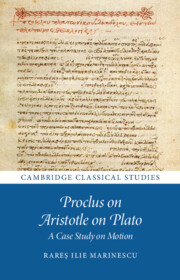
Proclus on Aristotle on Plato
- A Case Study on Motion
-
- Published online:
- 05 June 2025
- Print publication:
- 19 June 2025
-
- Book
-
- You have access
- Open access
- Export citation
4 - Love, Guilt and Forgiveness
- from Introduction to Part II: Towards Synthesis
-
- Book:
- Rethinking Criminal Justice
- Published online:
- 17 May 2025
- Print publication:
- 05 June 2025, pp 81-102
-
- Chapter
- Export citation
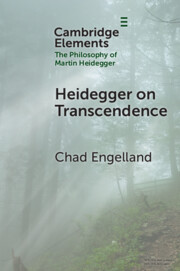
Heidegger on Transcendence
-
- Published online:
- 28 May 2025
- Print publication:
- 12 June 2025
-
- Element
- Export citation
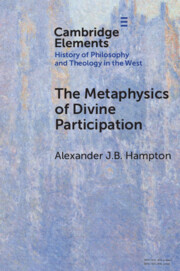
The Metaphysics of Divine Participation
-
- Published online:
- 28 April 2025
- Print publication:
- 22 May 2025
-
- Element
- Export citation
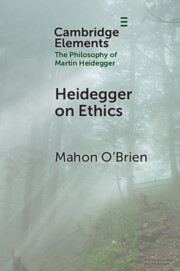
Heidegger on Ethics
-
- Published online:
- 25 March 2025
- Print publication:
- 17 April 2025
-
- Element
- Export citation
‘Utrum physiologia sit prima philosophia’: Metaphysics and science in Tommaso Campanella
-
- Article
-
- You have access
- Open access
- HTML
- Export citation
1 - Metaphysics
- from Part I - The Block Universe
-
- Book:
- Salvation in the Block Universe
- Published online:
- 09 January 2025
- Print publication:
- 23 January 2025, pp 13-41
-
- Chapter
- Export citation
The Nude in the renaissance: Unveiling the world and revealing human dignity
-
- Article
-
- You have access
- Open access
- HTML
- Export citation
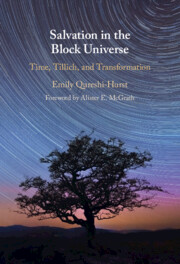
Salvation in the Block Universe
- Time, Tillich, and Transformation
-
- Published online:
- 09 January 2025
- Print publication:
- 23 January 2025
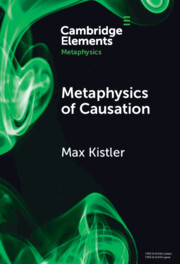
Metaphysics of Causation
-
- Published online:
- 03 January 2025
- Print publication:
- 16 January 2025
-
- Element
-
- You have access
- Open access
- HTML
- Export citation
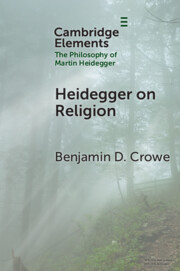
Heidegger on Religion
-
- Published online:
- 11 December 2024
- Print publication:
- 16 January 2025
-
- Element
- Export citation
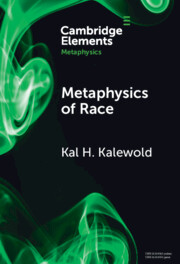
Metaphysics of Race
-
- Published online:
- 05 December 2024
- Print publication:
- 16 January 2025
-
- Element
- Export citation
9 - Why It Is Better for a Dasein Not to Live Forever, or Being Pro-Choice on the Immortality Question
- from Part II - Rethinking Death after Heidegger
-
- Book:
- Rethinking Death in and after Heidegger
- Published online:
- 18 December 2024
- Print publication:
- 05 December 2024, pp 267-285
-
- Chapter
- Export citation
Chapter 8 - Presuppositional Analysis and the Goal of Metaphysical Inquiry
- from Part II - Issues in Collingwood’s Philosophy
-
-
- Book:
- Interpreting R. G. Collingwood
- Published online:
- 22 November 2024
- Print publication:
- 05 December 2024, pp 143-160
-
- Chapter
- Export citation
Chapter 9 - Is Collingwood a Process Philosopher?
- from Part II - Issues in Collingwood’s Philosophy
-
-
- Book:
- Interpreting R. G. Collingwood
- Published online:
- 22 November 2024
- Print publication:
- 05 December 2024, pp 161-183
-
- Chapter
- Export citation
4 - Death and Rebirth in Being and Time’s Perfectionist Philosophy of Education
- from Part I - Rethinking Death in Heidegger
-
- Book:
- Rethinking Death in and after Heidegger
- Published online:
- 18 December 2024
- Print publication:
- 05 December 2024, pp 130-156
-
- Chapter
- Export citation
1 - Death and Demise in Being and Time
- from Part I - Rethinking Death in Heidegger
-
- Book:
- Rethinking Death in and after Heidegger
- Published online:
- 18 December 2024
- Print publication:
- 05 December 2024, pp 3-73
-
- Chapter
- Export citation
